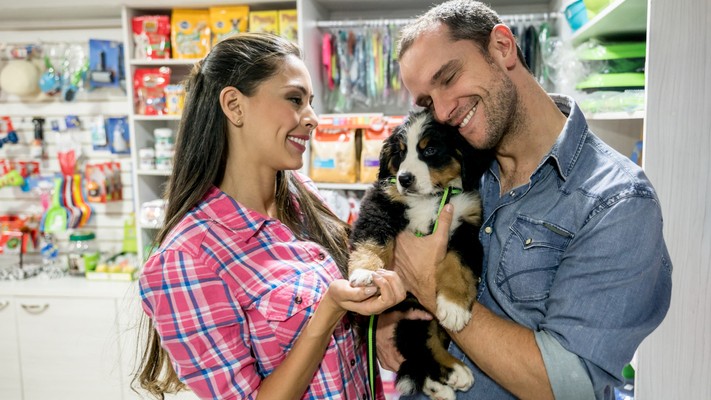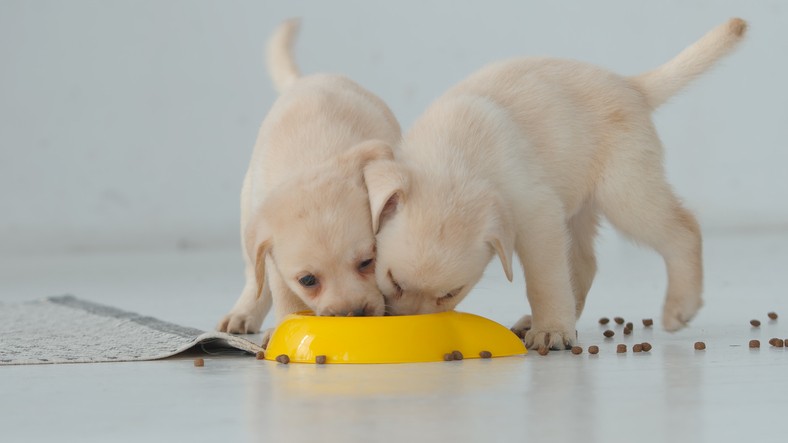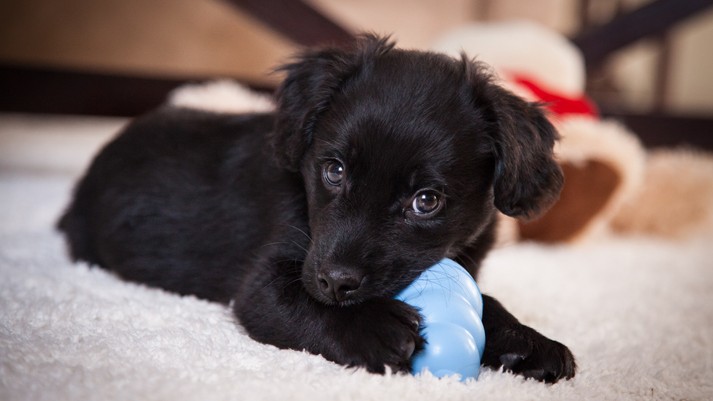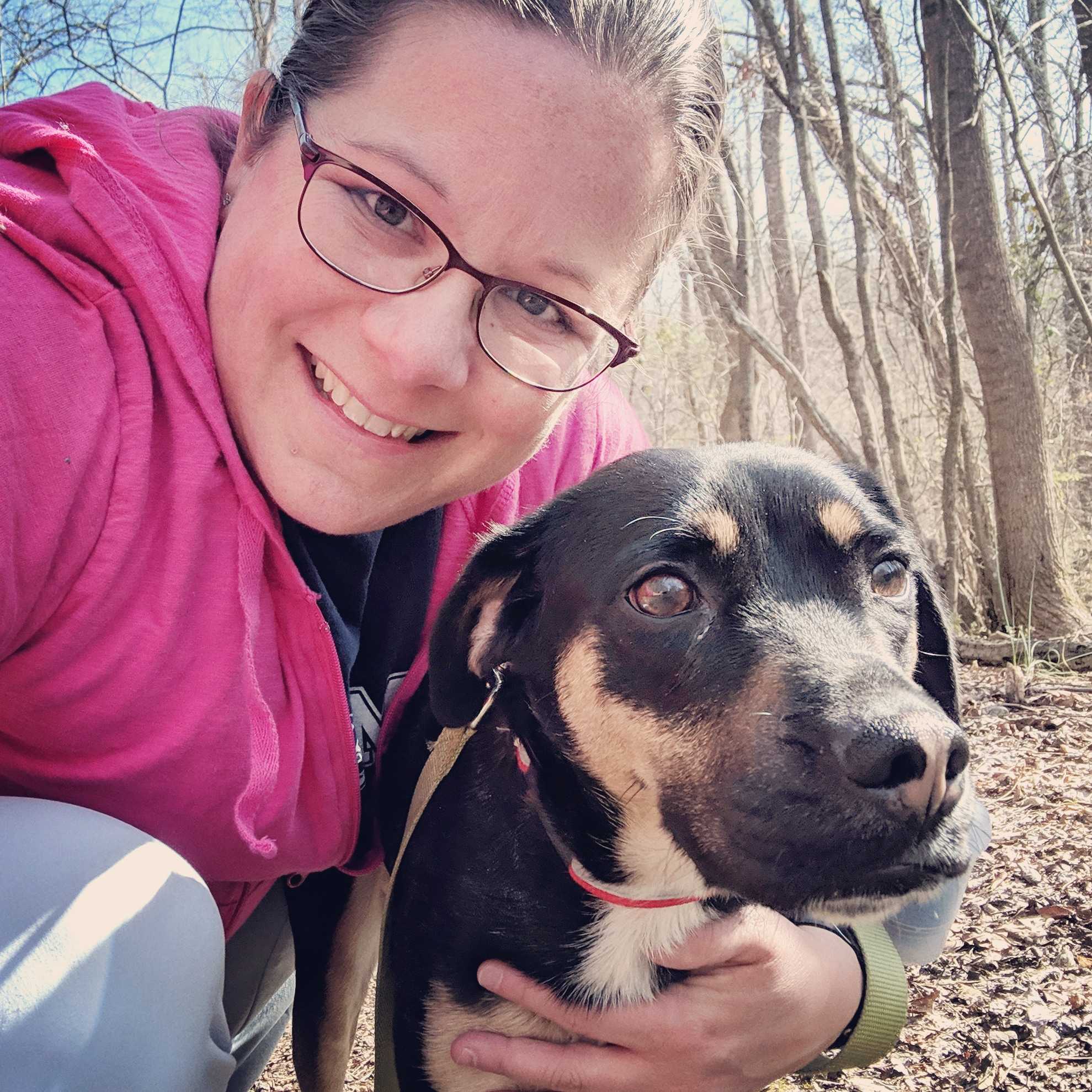Puppy checklist: Nine ways to prepare for your new dog
Read this puppy checklist to find out if you are prepared to welcome a puppy into your home

When bringing a new puppy into your home, a puppy checklist can help you ensure that you don’t forget anything. Not only are there a number of essential supplies that you must purchase, but also important decisions to make and home preparations to consider. Taking the time to prepare thoroughly before adding a puppy to your home (instead of waiting until afterwards) can ensure that this transition goes as smoothly as possible, helping your new puppy get the best possible start as a new member of your family.
1. Puppy-proof your home by taking a dog’s eye view.
Puppies love to chew. Unfortunately, this tendency can get them into trouble! Not only can puppies damage your belongings, they can also ingest dangerous items, chew on electrical cords, and otherwise jeopardize their health.
Take the time to puppy-proof your home. Get down on your hands and knees and look around your house for anything your puppy could get into. Pick up items your puppy could ingest, secure cords, and otherwise limit your puppy’s access to danger. If an area of your home can’t be easily puppy-proofed, install a baby gate or plan to keep doors closed, in order to keep your puppy safely out of that area.
2. Choose a vet to help you care for your puppy
If you already have pets in your home, you likely already have a family veterinarian. If not, now is the time to choose one! Talk to friends and family to select a veterinarian that you trust to care for your puppy.
When researching veterinarians, it’s important to evaluate not only financial considerations and customer service, but also quality of medical care. Look for a veterinarian that offers up-to-date medicine with an emphasis on wellness testing (items like pre-anesthetic blood tests and annual blood tests) and low-stress visits. Also, familiarize yourself with after-hours emergency veterinary clinics in your area, in case your puppy has an emergency when your veterinarian’s office is closed.
3. Research pet insurance, and decide whether you want to purchase a policy for your puppy
Pet insurance reimburses unforeseen medical expenses, such as those associated with illness or injury. Some policies even help cover preventative care. One key difference between human medical insurance and pet insurance, however, is that pet insurance typically reimburses you for expenses. In most cases, you will still need a way to pay for your pet’s medical expenses (such as a credit card); your insurance provider will reimburse you after you submit receipts.
There are a number of pet insurance providers and policies, which vary significantly. If you decide to purchase pet insurance, pay careful attention to the details of your policy in order to minimize surprises. Our guide on how to get cheaper pet insurance has some great advice on reducing costs and our buying guide will help you find the best pet insurance deal for you and your new puppy.
4. Set up a comfortable crate for your puppy, for safety and for use as a training aid
Crate-training is widely regarded as one of the most effective methods for house-training a puppy, while also limiting your puppy’s ability to get into trouble when unattended. Puppies typically avoid urinating or having bowel movements where they sleep, which means that most puppies avoid eliminating in an appropriately-sized crate.
The crate should be big enough that your puppy can comfortably stand, turn around, and lay back down, but not much bigger. If the crate is too big, your puppy may designate one area for sleeping and one area for eliminating. You might need to purchase several different crates as your puppy grows, or purchase a crate with a divider that can be used to alter the crate size.
Because your puppy will likely spend a good bit of time in his crate, you should purchase a comfortable bed. Remember that puppies like to chew, so it’s helpful to purchase a bed that will be relatively difficult to destroy!
5. Purchase a well-balanced puppy food, as well as food and water bowls

Selecting an appropriate puppy food can be challenging. It’s often difficult to separate scientific facts from marketing hype. What’s a new puppy owner to do? The easiest option is to call your veterinarian’s office to ask what diets they recommend.
In most cases, your veterinary team will provide a list of several different options for your puppy. If you elect to conduct your own research, look for information provided by reputable veterinary associations, such as the American Veterinary Medical Association (AVMA), the World Small Animal Veterinary Association (WSAVA), and the American College of Veterinary Nutrition (ACVN).
Finally, seek out a food manufacturer that conducts feeding trials in accordance with the Association of American Feed Control Officials (AAFCO) guidelines and employs board-certified veterinary nutritionists, as these steps indicate a commitment to quality nutrition. Our round-up of the best puppy food will offer some great options too.
6. Purchase several types of treats to ensure that you have something your puppy loves
Treats are essential, so you will want to have several types of treats on hand when you bring home your new puppy. Use trial and error to see which treat your puppy prefers. Small treats (about the size of your pinky fingernail) are ideal for rewarding your puppy, but larger treats can be broken into pieces. Research has shown that positive reinforcement (rewarding good behavior) is far more effective than punishing a puppy for bad behavior; finding your puppy’s ideal treat will allow you to use this strategy to your advantage! There's plenty of options in our guide to the best puppy treats.
7. Be ready to take your puppy for walks outside
Although you will want to keep your puppy away from heavily traveled areas until his puppy vaccines are complete, you will want to begin leash training your puppy from an early age. Purchase an adjustable collar and leash so that you can start taking your puppy outside. It’s best to stick with a nylon leash that is approximately 4 feet long. Using a longer leash or a retractable leash will make it far more difficult to teach your puppy good leash manners. Here's how to put a harness on a puppy.
8. Think about how you will keep your puppy busy and entertained

Like human children, puppies are constantly on the go! It’s important to provide mental stimulation in order to reduce the amount of trouble your puppy gets into. Before bringing your puppy home, purchase several different toys, ranging from plush toys to rubber chew toys. Our round-up of the best puppy toys will give you some ideas and options. Having a wide variety of toys is important, because each puppy may have different toy preferences. Keep in mind that puppies can be destructive, so look for toys that will be durable and stand up to heavy chewing.
9. Be ready for messes, because they’re inevitable!
Even if you do everything right with training, your puppy is still likely to have occasional accidents. When cleaning carpets and other surfaces, use an enzymatic cleaner intended for cleaning pet accidents. These cleaners contain enzymes that break down the proteins in puppy urine and feces. When cleaning your puppy, use a gentle pet shampoo. You may also want to purchase cleaning wipes (similar to baby wipes), which can be used for spot-cleaning your puppy when a full bath isn’t necessary.
Enjoy your puppy
If you have adequately prepared for your puppy’s arrival, you will be in a better position to enjoy those early weeks with minimal stress. Preparing for your puppy’s arrival in advance will ensure that you have more mental energy to devote to bonding, socialization, and training, ensuring that you and your puppy get the best possible start together.
Want more puppy advice like this? Check out our feature on how to stop your puppy crying at night. This feature answers ‘how far can a puppy walk?’
PetsRadar Newsletter
Get the best advice, tips and top tech for your beloved Pets
Dr. Barnette is a graduate of the University of Florida, where she received both her B.S. in Zoology and her Doctor of Veterinary Medicine (DVM). She has 15 years of clinical experience as a small animal veterinarian, treating dogs, cats, and occasional exotic patients. She now works as a freelance veterinary writer, creating educational content for veterinarians, veterinary team members, and dedicated pet owners. Dr. Barnette lives in southwest Florida with her husband and daughter (plus two cats, a dog, and a rescued dove!) and enjoys kayaking, biking, and hiking. Learn more about Dr. Barnette at www.linkedin.com/in/catherinebarnette.

